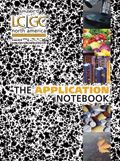Acylglycerol Determination in Biodiesel by RSLC with Charged Aerosol Detection
Many methods have been proposed to determine acylglycerols in biodiesel samples. This analysis is commonly performed by GC/FID (ASTM D6584/EN14105 methods).
Deanna C. Hurum and Jeffrey S. Rohrer, Dionex Corporation
Many methods have been proposed to determine acylglycerols in biodiesel samples. This analysis is commonly performed by GC/FID (ASTM D6584/EN14105 methods). However, GC methods typically require derivatization of the sample and high inlet temperatures can lead to analyte decomposition, causing underestimation of acylglycerols prone to thermal degradation. HPLC analysis with charged aerosol detection (CAD), is emerging as an alternative method for biofuel analysis. This technique is well-suited to determine components with varying degrees of response using other detection technologies. Previous work has shown that the ASTM GC method and HPLC methods can be statistically equivalent (1). By using HPLC, samples can be injected with no derivatization requiring only dilution. Additionally, by using a small particle size column, resolution can be improved while maintaining short run times. In this application brief, an RSLC biodiesel analysis method is shown that determines acylglycerols in fuels with a 10 min analysis time. This method avoids exceptionally toxic or environmentally damaging solvents, such as propionitrile and dichloromethane, which have previously been used for acylglycerol determination (2). Figure 1 shows the separation of a B99 biodiesel sample produced from used fryer oil that has been diluted in ethyl acetate. The monooleoyl glycerol and diacylglycerols are identified. Triacylglycerols elute later than the fuel methyl esters and are well separated and easily detected using the Acclaim® RSLC 120 C18 and the Corona® ultra™ Charged Aerosol Detector. With a broad detector dynamic range, oleoylglycerols can be determined between 5–100 μg/mL with peak area RSDs of <1.1 and logarithmic calibration correlation coefficients of 0.999. This range has the sensitivity to determine acylglycerols in biodiesel samples at and below the 0.24% and 0.25% total glycerol limits in ASTM D6751 and EN 14214, respectively. This leads to a rapid and sensitive method for determining acylglycerols in biofuels with minimal sample preparation.

Figure 1
Conditions
UltiMate® RSLC system with a HPG-3400RS pump, Corona ultra detector, and WPS-3000TRS autosampler.
An Acclaim® RSLC 120 C18 2.2 μm, 2.1 × 150 mm column was used with an ethyl acetate – acetonitrile gradient at 0.5 mL/min.
Gradient: 0–15% ethyl acetate in 0.5 min, 15–65% ethyl acetate in 3.5 min, 65–80% ethyl acetate in 5 min, 80% A for 1 min. 2 min equilibration before injection at 0% ethyl acetate.
Column Temperature: 15 °C
Inj. Volume: 3 μL
Detector Settings: Nebulizer = 15 °C, Filter = none, Nitrogen Pressure = 35 psi
Biofuel samples were prepared by dilution in ethyl acetate to 5 mg/mL prior to analysis.
References
(1) T. A. Foglia, K. C. Jones, A. Nunez, J. G. Phillips, and M. Mittelbach, Comparison of Chromatographic Methods for the Determination of Bound Glycerol in Biodiesel, Chromatographia, 60, 305 (2004).
(2) M. Buchgraber, F. Ulberth, H. Emons, and E. Anklam, Triacylglycerol Profiling by Using Chromatographic Techniques, Eur. J. Lipid Sci. Technol., 106, 621 (2004).
Corona and UltiMate are registered trademarks, and ultra is a trademark of Dionex Corporation.

Dionex Corporation
1228 Titan Way, P.O. Box 3603, Sunnyvale, CA 94088
tel. (408)737-0700; fax (408)730-9403
Website: www.dionex.com

SEC-MALS of Antibody Therapeutics—A Robust Method for In-Depth Sample Characterization
June 1st 2022Monoclonal antibodies (mAbs) are effective therapeutics for cancers, auto-immune diseases, viral infections, and other diseases. Recent developments in antibody therapeutics aim to add more specific binding regions (bi- and multi-specificity) to increase their effectiveness and/or to downsize the molecule to the specific binding regions (for example, scFv or Fab fragment) to achieve better penetration of the tissue. As the molecule gets more complex, the possible high and low molecular weight (H/LMW) impurities become more complex, too. In order to accurately analyze the various species, more advanced detection than ultraviolet (UV) is required to characterize a mAb sample.














